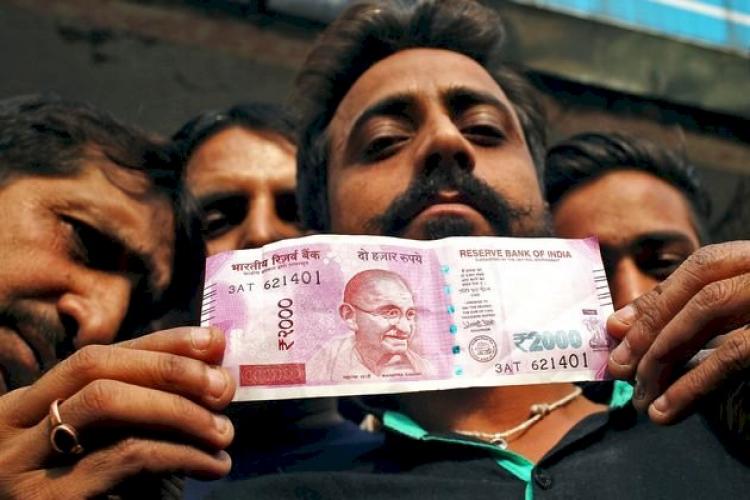Demonetization has been brought up once again by a Reserve Bank of India (RBI) decision. The Rs. 2,000 note will be taken out of circulation by the RBI.
In November 2016, a note like this one entered circulation. The 500 and 1,000 rupee notes had been outlawed by the Centre at that time. A new note for Rs. 500 and Rs. 2,000 was introduced as its substitute. As of 2019, the RBI will no longer be producing the Rs. 2,000 notes.
Until September 30, 2023, the RBI is requesting that individuals swap their Rs. 2,000 notes at banks or deposit them in their accounts. Additionally, banks will not issue any fresh Rs. 2,000 notes to account holders.
As of March 31, 2023, there were only Rs 3.62 lakh crore in circulation (or 10.8% of all notes in circulation), down from Rs 6.73 lakh crore (or 37.3% of all notes in circulation) as of March 31, 2018, when there were Rs 2,000 note notes in circulation.
In India, demonetization has already occurred twice before 2016.
The British government had implemented demonetization in 1946. Then, in 1978, the 1,000, 5,000, and 10,000 rupee notes were demonetized.
On November 8, 2016, Prime Minister Narendra Modi announced the demonetization of currency. Following this, all of the 500 and 1,000 rupee notes—which made up 86% of the country's overall circulation at the time—were outlawed.
With the decision to demonetize, it was promised that the nation would be cleansed of black money, the economy would become cashless, and indirectly, extremism and terrorism would be reduced. Some even believed this to be a surgical attack on corruption.
People began lining up outside banks to swap their money once the decision to demonetize was made. Although there was mayhem everywhere, the nation as a whole remained together.
Interestingly, despite tales of note bundles being burned and tossed into rivers, this demonetisation has not made sense in the case of illicit money. In addition, a report released by the RBI in August 2018 revealed that 99.30% of the old notes had been deposited back into banks, negating the government's expectation that people with significant amounts of black money would experience a shock and returning almost all of it to the banks instead.
Influential individuals did not have any issues exchanging their large quantities of 500 and 1,000 rupee notes from the banks. The lives of rural and disadvantaged individuals who rely on money were the most negatively impacted.
Pradhan Mantri Jan Dhan Yojana (PMJDY) accounts experienced an unexpected cash injection of roughly Rs 42,000 crore between November 8, 2016, and December 30, 2016.
In reality, powerful persons contributed the majority of the shares in this. Some powerful individuals also used gold stores to convert black money into white.
In actuality, the majority of black money is held in gold and real estate rather than cash, and demonetisation has not had an impact on these assets. According to statistics from the Swiss National Bank, the amount of money that Indian people and businesses have parked in Swiss banks has risen to a 14-year high of 3.83 billion Swiss francs (more than Rs. 30,500 crore) in 2021.
The issue of fake currency is still present. According to the RBI, there are now 10.7% more bogus notes than there were before. 6.9% of the total number of fake notes were found at the RBI, while 93.1% were found in other banks. Even now, terrorism continues to be a serious issue. The situation with regard to Naxalite operations is similar.
People had hoped that when demonetisation was announced, the gap between wealthy and poor in the nation would narrow, but this did not occur.
According to the “Survival of the Richest” study by Oxfam International, there will be 166 billionaires in India by 2022, up from only 9 in 2000, when there were 102.
Just 5% of Indians currently own more than 60% of the country's wealth, while the wealthiest 1% of the population owns more than 40% of the total.
How well has the digital transaction gone? This question's response seems to be in the government's advantage.
According to estimates from the RBI, the Unified Payments Interface (UPI) would be used to record over 71 billion digital payments throughout India in the fiscal year 2022.
Compared to the preceding three years, this was a huge rise. Demonetization, a stronger Internet infrastructure, the widespread use of cellphones, the Covid-19 outbreak, and other factors all contributed to the rise in cashless transactions over time.
Nowadays, QR codes are also used to make donations. When it comes to digital payments, this is nothing less than a revolution. According to a Boston Consulting Group research, two out of every three transactions in India would be digital by the year 2026.
But it's also true that individuals are more dependent on cash than ever before, and that bank confidence has declined.
Cash continues to rule the market. by November 4, 2016, there was Rs 17.74 lakh crore in circulation before to demonetisation; by December 23, 2022, there would be Rs 32.42 lakh crore in circulation. This demonstrates that despite demonetisation having taken place six and a half years ago, the nation still uses a lot of currency.
It is very difficult to say whether the decision to demonetize currency was wise or not.
However, the Supreme Court's Constitutional Bench has provided the government with significant respite about the choice to implement demonetisation.
In order to save the government, the public, and themselves the expense of this whole procedure, it would have been preferable if the Rs. 2,000 note had never been introduced in the first place.
In order to combat the issue of black money, it is also recommended that the Rs. 500 notes be phased out of circulation, that property be linked to Aadhaar, that the property tax be raised, that cash transactions exceeding Rs. 5,000 be prohibited, and that Aadhaar be made mandatory for transactions valued at more than Rs. 50,000. The economy will shine brighter, the more transparent the transactions are.
The author teaches at the Atal School of Management at Jawaharlal Nehru University in New Delhi as an adjunct professor.
(Disclaimer: The author's opinions are their own, and Outlook Money does not imply that it shares them. Outlook Money disclaims any liability for any direct or indirect losses incurred by any person or organisation.

